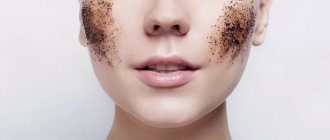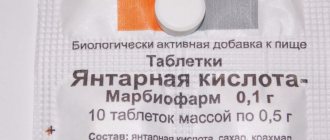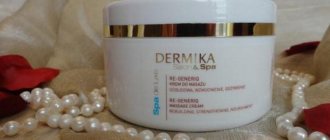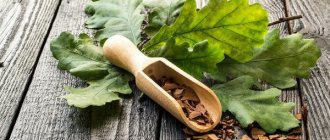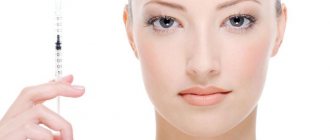Cosmetic clay as a cosmetic product has been known to the world for quite a long time. It is known to have antibacterial, anti-inflammatory and detox properties. In this article we will tell you about cosmetic clay: how to use, basic properties, composition, and so on.
On the shelves of ordinary stores it is very easy to find cosmetic clay of any color, either as a mono product or as one of the components in cosmetics. Depending on the color of the clay, its properties differ, but we will talk about this below.
Special composition of cosmetic clay
Despite the fact that the clay varies in color, the composition is practically the same. Here's what you can find:
- The most important substance is silicon oxide. It can restore injured blood vessels, improve collagen production and stimulate the regeneration process;
- Aluminum - dries out the skin (an excellent product for those with oily or combination skin types). Green, white and red clays contain the most of it;
- Manganese - it is thanks to it that clay works as an antiseptic;
- Magnesium - helps start the process of skin regeneration and rejuvenation;
- Copper - thanks to it, the production of keratin is stimulated, which is very important for rejuvenation and “glow”. It also protects the skin from the harmful effects of the environment;
- Zinc – protection against various harmful bacteria and cell rejuvenation;
- Other components - iron, phosphorus, nitrogen and others nourish the skin with important substances.
Pink (French)
A combination of white and red clay, soft and soothing. This is a really great ingredient for sensitive skin that you can use in face masks.
- Composition: iron, copper, silicon, potassium, magnesium, aluminum, calcium, silicon, magnesium, zinc.
- Property: gently cleanses sensitive skin, relieves fatigue and irritation, improves blood circulation, activates metabolic and regenerative processes, solves problems of enlarged pores.
- Purpose: clogged pores, acne, oily face, skin diseases.
How to use cosmetic clay: let's talk about the properties
Clay has a lot of important advantages, unique and inimitable. Namely:
- Cleansing - it penetrates deep into the skin through the pores, removes excess sebum (sebum), impurities and dust;
- Regulation - the activity of the sebaceous glands decreases, the production of sebum is normalized;
- Moisturizing - the skin after clay masks is velvety, even and smooth. Important: you should not let the clay dry out on your face (lighten and harden), otherwise, instead of moisturizing and nourishing, it will draw all the moisture from the skin. There is a solution: either spray your face with tonic periodically, or apply a very thick layer);
- Calming effect - relieves inflammation, eliminates irritation. Provided that you are not allergic to the components of the composition;
- The most important thing is the absence of age and other restrictions. It doesn't matter what skin type you have or how old you are. From adolescence to old age, you can safely use cosmetic clay for the face and body.
Contraindications
Home clay procedures may have contraindications for use. You should not make clay masks if you have diseases of the circulatory system or if there is an exacerbation of individual chronic diseases. Any cosmetic mixture made from clay can cause allergic reactions. Most often, they appear not from the clay itself, but from some components of the mask. It should not be used for chronic skin diseases. First, a test smear of clay is made on the inner bend of the elbow and the reaction is observed. If there is redness and burning, you should stop using the mask for a while.
Before using a clay mask, you must perform an allergy test. To do this, apply a small amount of clay to the inside of the forearm and wait a few hours; if itching and burning does not occur, then you can apply the mask to the face.
Clay masks are prohibited for women during pregnancy and during the menstrual cycle. Pure clay is contraindicated for women with aging skin of any type, since after its use the level of moisture in the skin decreases to a critical level.
Cosmetic clay: sorted by color
As described above, clay varies greatly in color, slightly in properties and composition. There are several colors: white, blue, yellow, green, red and black. Let's start in order:
- White clay or kaolin: whitening and smoothing out unevenness. The most easily accessible and famous. White cosmetic clay will help with almost all skin problems: acne, flaking, redness, inflammation, and so on. It is easy to find in many formulations of skin and body care cosmetics. After using white cosmetic clay, sebum production is reduced, excess oily shine is removed, acne dries out and facial wrinkles are smoothed out. Moreover, kaolin can be used as a scrub or peel if you want to gently and gently remove dead skin cells;
- Blue clay: healing and drying. No less popular than white and is considered top due to the presence of many vitamins, minerals and microelements. Especially cadmium and cobalt. It is recommended for those with oily and combination skin types to use blue cosmetic clay for the face - acne and blackheads disappear over time. The complexion is refreshed, the skin becomes smooth, clean and radiant. A big bonus is the stimulation of blood circulation, which helps fight cellulite, stretch marks and inflammation;
- Yellow clay: freshness and tone. It contains sodium and sulfur, so it is perfect for dull and “sad” skin of the face or body - it’s a good oxygen shock. The effect is cumulative, but the first results will be visible after just a few uses - the skin will brighten, glow, look healthy and rested. If you have areas on your body with rough or dead skin (elbows, heels), you can apply yellow clay to them to soften, moisturize and exfoliate. It is also an excellent remedy for regulating foot sweating and eliminating unpleasant odor. You can make foot masks to exfoliate the skin on the heels, remove the stratum corneum and unpleasant odor;
- Green clay: relaxation and calm. The composition includes copper and iron oxide - hence the color. These components help stimulate blood circulation, which leads to a pleasant glow on the skin and gradual rejuvenation. Green cosmetic is recommended for use if you have dermatitis or oily skin (in the first case, be sure to consult your doctor!). It's great to take baths with green clay before bed - very relaxing and calming;
- Red clay: warming and healing. It has this color due to a lot of copper, potassium and iron oxide. The skin is very well saturated with oxygen, blood circulation improves. As a result, the elasticity and firmness of the skin increases. Red clay warms up the skin, so it is good to use red cosmetic clay in the cold season to avoid chapping and dehydration. For dry, sensitive or dehydrated skin, red clay is a real gift. Redness, itching, peeling and dryness disappear in a short period of time if masks are used regularly;
- Black clay: cleansing and protection. In its composition you can find magnesium, manganese, quartz, iron and many, many other benefits. Many of them perfectly cleanse the skin and remove dirt and toxins from it. In addition to them, the use of black cosmetic clay helps smooth cellulite and reduce fat. In many salons and beauty parlors, it is used as an anti-cellulite agent for body wraps, massages and other manipulations to reduce centimeters in girth in various places. In addition to all of the above, subcutaneous and intracellular metabolic processes are accelerated. As a result, the skin is not only nourished and moisturized, but also protected from the harmful effects of the environment.
How to choose
Skin care for the face and neck requires an individual approach. Therefore, you need to choose a product based on the problems that concern the owner of a particular type of epidermis. Knowing the healing properties of each type of clay, you can make the right choice. To choose a cosmetic powder, you need to know your skin type. Dry, oily, normal and combination skin need their own separate components to improve its structure. A consultation with a cosmetologist will help you determine your skin type and choose the right clay to apply at home. Read about which clay to choose for your face here.
Cosmetic clay: how to use for face and body
Making a clay mask couldn't be easier! You just need to mix the clay with water and you're done. You can mix the powder with anything:
- Warm water;
- Mineral water;
- Milk or cream;
- Green or black tea;
- A decoction of herbs and so on.
It is better to use glassware or, in extreme cases, plastic. It is better to avoid metal clay, since clay loses many important and useful substances in it. The consistency should be like sour cream (20-25%), such a density is very convenient to apply to the skin - it does not flow or drip.
Results
- The mask is a kind of peeling, helps normalize the functioning of the sebaceous glands, nourishes and moisturizes, disinfects, gives the skin firmness and elasticity, heals the dermis and deeply cleanses the pores.
- Each type of clay has its own individual properties, so their use is possible for any skin type.
- Mixing different types of mineral enhances their effect.
- Clay itself has no contraindications and is therefore safe for use.
- You can use masks at any time of the year, but they are especially effective in summer and winter, when the level of stress on the skin from ultraviolet radiation or cold is quite high.
A high-quality homemade clay mask requires adherence to exact proportions, as well as proper application to the skin and storage conditions. Read about recipes on how to make a clay mask at home here.
Cosmetic clay: how to use
Despite the simplicity of “preparing” a clay mask, for maximum effectiveness it is better to follow a certain algorithm of actions:
- Cleanse the skin of cosmetic residues with foam or another similar product;
- Treat with scrub or peeling (only gently so as not to injure the skin);
- Even better is to steam the skin for about 15 minutes. The better the cleansing, the brighter the effect of the mask will be;
- Dilute the powder with the liquid to the consistency of sour cream;
- Stir thoroughly, there should be no lumps or air bubbles;
- Apply the mixture to the skin in an even layer;
- Leave for about 15 minutes, but do not let the clay dry out! Spray your face with tonic or plain warm water from time to time;
- After the time has passed, rinse off the mask with warm water and pat your face dry with a paper towel;
- Apply a light moisturizer to seal the result.
Now you know how to use cosmetic clay for your face and body. This is a great beauty product because it is easy to find, cheap and very effective. Several colors can be mixed with each other and they will retain their benefits! The effect is cumulative, make masks from cosmetic clay several times a week and the results will not be long in coming!
How to make masks
The traditional way to prepare a face mask at home is to combine purified water or herbal decoction, as well as the clay powder itself: 2 tbsp. l. liquid component per 3 tbsp. l. clay. As soon as the liquid is well absorbed into the powder, the base is mixed until smooth so that there are no lumps left.
Method of preparing, applying and washing off a clay mask.
Otherwise, applying the product will not give the desired effect. The structure of the prepared mass should be similar to thick sour cream.
Clay loves light, so before applying a mask based on it, you should leave it in the sun or under a daylight lamp.
Mixing is carried out only with a wooden spatula or spoon. The homemade mask is left on for 40-60 minutes. in a warm place, then add a little essential oil. Its quantity will depend on the purpose of use. For oily skin, fruit or vegetable juices are used instead of water, and lemon and lavender essential oils are added. For dry and normal skin, honey, milk, olive oil and egg yolks are perfect.
Yellow
Gently cleanses dead skin cells, regenerates, and is suitable for oily, combination, aging skin due to its gentle action.
- Composition: silicon, iron, manganese, chromium, potassium, sulfur.
- Property: stimulates metabolism, circulates blood, eliminates infections and bacteria, relieves inflammation. Slows down the aging process, removes radicals from the body, regulates metabolic functions, participates in the normalization of water-lipid balance, and supplies vitamins and microelements.
- Purpose: Problematic scalp, obesity, dermatitis, eczema, vitamin deficiency, wrinkles.



